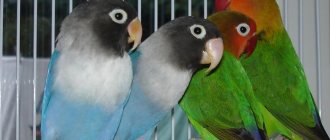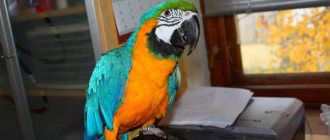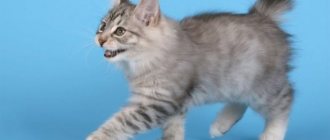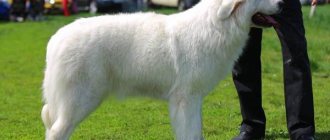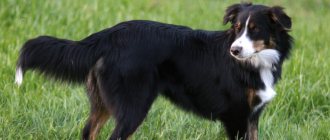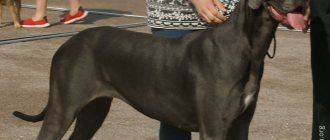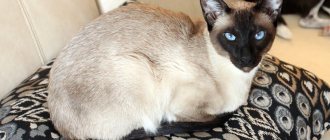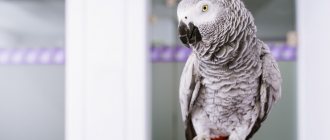People prefer to buy small pets, especially when it comes to living in an apartment. In this case, lovebirds are ideal. The color of lovebirds is quite bright, they easily adapt to living conditions in captivity. There are a number of features that must be taken into account if the bird will live as a pet.
general information
Small, bright, active parrots are sociable, reproduce well in captivity, and are easy to care for. Birds mate for life, are constantly with their chosen one, and do everything together.
Watching several individuals, you can see how they huddle closely together, fingering their partner’s feathers. Because of their strong attachment to their soulmate, birds are called lovebirds.
General information about the parrot
This behavioral feature is also reflected in the scientific name of the genus, which means “love bird” in translation from Greek.
Range, habitats
The natural habitat of these parrots is southern Africa (tropical forest zones). They are social birds and live in flocks, or colonies. Choose places near bodies of water - lakes or rivers.
Different species have their own habitats:
- red-faced: Sierra Leone, Tanzania, o. Sao Tome;
- rosy-cheeked: South Africa, Angola, Namibia;
- grey-headed: o. Madagascar, Seychelles, Zanzibar;
- black-cheeked: Zambia.
But it is possible for representatives of several species to live in the same territory. The average lifespan of birds is 10 years. If an individual is in good health and living conditions are above average, it will live up to 15 years.
External description, size and weight of the bird
Miniature birds still belong to medium-sized parrots. The length of their body is 12-17 cm, the wings are about 10 cm, and the short, strongly rounded tail reaches 3-5 cm. The body weight of the birds is about 50-55 grams. The head is large. The powerful, very curved beak can be scarlet or straw in color.
External description of the lovebird parrot
Thanks to their colorful plumage, lovebirds look very impressive. The predominant color is green. Individual parts of the body are usually distinguished by rich shades of red, blue, pink or yellow.
Causes of death
On average, birds live 15 years. Life expectancy depends on the conditions of keeping and caring for lovebirds. Often the owners themselves are the culprits of death.
Main causes of death:
- a fall,
- obstruction of the egg in the female;
- cardiac arrest after fright;
- consumption of prohibited foods;
- if the pet flies out into the wild (it is not adapted to independent life on the street);
- intoxication from contaminated food, dirty water or harmful chemicals;
- lovebirds can be eaten or maimed by pets;
- disease of lovebirds (problems with the endocrine and cardiovascular systems, the presence of parasites in the body).
Character
In relation to humans, birds demonstrate friendliness, sociability, and loyalty. They wait for the owner to return from work and sincerely rejoice at his arrival. Lovebirds have a lively character, are very active, curious, love to climb the bars of the cage, perches, rungs and play.
Read also
Is it possible to give a parrot roasted seeds?
When choosing a partner, they are guided by the presence of sympathy for an individual of the opposite sex. They are monogamous, create a pair for life, show care for their significant other, as well as for their offspring. However, these parrots are quite cocky and aggressive towards other birds. They zealously defend their own territory from both strangers and relatives.
Character of a lovebird parrot
Reproduction
For good offspring, you need to choose the right pair, as well as arrange a favorable life for them. For breeding, it is worth choosing exclusively healthy individuals - this is the only way healthy procreation can occur. Active, non-nervous birds with beautiful plumage are considered healthy.
It is best to consult a specialist before starting breeding, or get tested for diseases. Sometimes the selected couple may not suit each other, and they will begin to conflict. You can try to separate them into different cages for a period of 2-3 weeks, and if after that their relationship does not change for the better, then you will have to look for a replacement for one of the birds.
There are several reasons why birds cannot reproduce: one of the birds has not reached the age of sexual maturity, you mistakenly chose two same-sex birds, or diseases. A mature individual is considered to be a bird that has reached 9 months of age.
The most favorable age for breeding lovebirds is from 1 to 4 years inclusive.
It is also useful to read: Features of cockatoo parrots
Behavioral features
It is worth noting the aggressiveness of birds towards birds of other species. With their large, strong beak, lovebirds are capable of causing serious injuries to neighbors when kept together. This behavior is especially pronounced during the breeding season. Having a very loud voice, in captivity lovebirds still behave quietly; they do not scream in vain.
The habits of wild females of some subspecies during nest construction are interesting. The bird carries blades of grass and twigs, inserting them between the feathers on its chest, lower back, and wings. This method of transporting materials makes the parrot look like a flying haystack.
Features of parrot behavior
Domesticated species
Most often kept in captivity:
- Fisher's lovebirds;
- Rosy-cheeked lovebirds;
- Masked lovebirds.
Fisher's lovebirds
These are almost domesticated species that feel great in captivity.
Other types of lovebirds rarely fall into the hands of amateurs, and they can be bred in captivity mainly only in large enclosures, which not everyone can afford to keep.
Is a pair so important for a lovebird?
It was previously believed that if birds were separated, they would die of boredom. But, despite the eloquent name, parrots of this species can still live on and form a pair again after the loss of a partner. The pet will really be sad for some time, but with sufficient care from the owner it will quickly recover.
If you decide to get a lovebird, but are not going to breed pets, then you are probably asking the question: “Is it possible to keep birds alone?” The reason for this is again the name of the birds, because when buying a wave, a cockatiel or a bird of another species, few people doubt and ask themselves such a problem.
In fact, there are no big differences in content between them, and lovebirds, like other parrots, can live in a single copy. However, we must not forget that these are socially developed creatures that need constant communication. In the absence of their own kind, they will require more human attention.
The importance of a lovebird pair
Owner reviews
Many people believe that lovebirds cannot be kept alone, but in fact this is a complete misconception. They feel great without their significant other. The only problem is that the bird will have to pay more attention.
As practice shows, these birds are tamed with great difficulty, although the males, as they become older, become more friendly. If you cannot pay much attention to birds, then it is better to immediately purchase a couple of these amazing birds. This is especially true for those who rarely show themselves at home, as the birds will suffer from loneliness. And so, there are no special problems in matters of keeping lovebirds. The main thing is to follow some recommendations regarding the prevention of various diseases.
Varieties and descriptions of parrots
The genus includes nine species of parrots. They differ from each other in habitat, size, color, and ability to reproduce in captivity.
Read also
How to treat a parrot with diarrhea at home
Masked
The habitat of birds is the eastern lands of the African continent. In 1927 they were imported to European countries.
Parrots of this species are valued for their spectacular, bright colors. The beak is usually scarlet, with white “spectacles” around the eyes. The head is black. Grassy and blue tones predominate on the body.
Masked lovebird
Breeders additionally bred blue and purple varieties of birds.
Collar or necklace
The natural habitat is the central lands of Africa. A miniature parrot measuring about 14 cm, with a short tail up to 2.5 cm. It is rare in captivity. They have an orange necklace. Usually they are green, the neck itself is black. The bird's breast is yellowish, the back is bright blue, and the beak is black. You can find descriptions of birds called green-winged or green-headed lovebirds.
Grey-headed or Madagascar
In the wild, it lives in the Seychelles, Madagascar, and Mauritius. It is extremely rare in captivity. The subspecies was named gray-headed for its characteristic color. The neck, beak, head and neck of males are light gray in color, while those of males have a steel tint. The rest of the feather cover is in different colors of green.
Madagascar or grey-headed lovebird
Red-faced or orange-headed
In the wild, it lives in African savannas with low vegetation. The main color is light green. The forehead, front of the neck, cheeks and back of the head of a parrot with a reddish tint. Females with yellowness. Tail feathers are blue. Even with experienced breeders, birds of this species practically do not reproduce.
Blackwing
A parrot settles in the mountains of Ethiopia. Birds were discovered in Abyssinia by Stendhal in the 1800s, and imported to European countries only 90 years later. Having offspring is bad. The plumage of the forehead and the “spectacles” around the eyes of adult males are red. The wing is tipped anthracite and the tail feathers are edged with a dark edge. The rest of the body is a rich green color.
Rosy-cheeked
In the wild, it lives in the tropical thickets of Angola. In the 1980s, the species was brought to Europe by Carl Hagenbeck. Today, the rosy-cheeked lovebird is the most common pet among bird lovers, sometimes known as the red-cheeked lovebird.
Rosy-cheeked lovebird
A small bird about the size of a sparrow, but stockier in build. The predominant body color is green. The lower back has a blue tint, and the cheeks and part of the neck are pink. There are also other tones: rich blue coverts on the tail, scarlet side and tail feathers on the wings. The beak of an adult lovebird is straw yellow, while the chick's beak is brownish-black with a light tip. Males are brighter and more elegant than females.
The birds lend themselves well to breeding and have a cheerful and friendly disposition. However, they can show aggression towards birds of other species, which is why they must be kept separately from them.
Liliana or strawberry head
The birds' habitat includes the eastern territories of Zambia, Malawi, the northern regions of Mozambique and the southern lands of Tanzania. The subspecies is similar to the orange-headed lovebird, but smaller and more graceful. It was delivered to Europe in 1926. The upper part of the body is green, the belly is lighter than the back. The beak is scarlet, and there are white feathers around the expressive eyes. The crown, back of the head and chest of the parrot are yellow with a red-orange head.
Strawberryhead or liliana
Black-cheeked
Lives free in some areas of Zambia. It differs from the black-headed lovebird by its miniature size, reddish-orange breast plumage and green tail feathers. A very sophisticated parrot, brought to European countries back in 1910.
Fisher
In nature, it nests in the area near Lake Victoria. The subspecies was imported to European countries in 1930. The forehead and beak are scarlet. Cheeks and neck with a reddish tint. The breast is orange, the rest of the cover is green. They lend themselves well to breeding.
Read also
Fisher's lovebird
Spreading
Lovebirds come from Africa - the southwestern and southeastern parts of it. For some species, the homeland is also the island of Madagascar. The birds live near large bodies of water and usually nest in empty steppes or, conversely, in dense forests in a subtropical climate. Thanks to the large amount of vegetation, birds can easily find food in any conditions.
Specifics of keeping at home
The necessary conditions
For a lovebird to live comfortably in your home, you will need a fairly spacious cage. If the parrot is not planned to be allowed out for a walk every day, its size should be at least 100x60x80 cm.
lovebirds and porridge…. masked and pink-cheeked
But to maintain the pet’s muscular system and psyche in a healthy state, it is still recommended to let it fly freely. With this type of maintenance, the cage may be small. If there is only one bird, a transverse size of two wing strokes will be sufficient.
When there are several individuals, they will need a more spacious house or even an aviary. Lovebirds should not be kept together with other winged creatures.
It is advisable to choose a pet cage with metal horizontal bars. The width between them is acceptable so that the bird can freely climb the walls, but cannot stick its head into the gap and get stuck.
Inside the cage, several feeders are installed for different types of food, an automatic drinking bowl, and a bathing area for water treatments. In the wild, lovebirds settle near bodies of water and love to swim, so you should not limit them in this.
Keep your drink clean and your food fresh and replace them daily. The bedding at the bottom of the cage is changed every day, and hygienic cleaning and disinfection of the entire bird house along with accessories is done three to four times a month.
My lovebirds in the enclosure
Lovebirds are very active, curious and love to learn new things. For bird leisure, place a variety of toys in the cage: ropes, a mirror, swings, keys, a ball.
It is very good if it is possible to install a special stand for entertaining your pet during a walk.
For a pair of parrots to reproduce, hang a nest box or house. Place various blades of grass, twigs, and pieces of bark on the bottom of the cage for the female to arrange a nest.
During the period of incubation of eggs and feeding of chicks, pay special attention to the diet of the parents. At this time, the pet’s body needs more protein foods, fats, vitamins and minerals.
To keep parrots comfortably, certain climatic conditions are required. The room temperature should be in the range of 20-22 degrees, and the air humidity should be about 50-70%.
lovebirds parrots youth
During the breeding season, the latter figure increases to 80%. There are also recommendations regarding room lighting. The optimal duration of daylight in summer is 14 hours, in winter it is reduced to 12. If necessary, use artificial light sources or, conversely, shade the cage with dense fabric.
Cage structure
Birds spend most of the day in a cage, and therefore the choice of housing for pets must be taken responsibly. Although lovebirds are small, they will not be able to stay in close quarters all the time. Based on this, the dimensions of the cage should be at least 40*50*80 cm, if one bird is taken into account. The more parrots, the larger the cage you will need.
It should be remembered that a pet can stick its head into the space between the bars and suffocate. It’s better if this distance is 1.5 cm - it’s safer. With their strong beak, lovebirds try to gnaw everything around. The material from which the cage is made has special requirements: non-toxicity, strength. Birds often die after being poisoned by particles of low-quality alloys.
For ease of cleaning, a removable or pull-out tray is desirable. Its surface is covered with writing paper and non-woven towels. It’s good if there is an insert made of organic glass along the perimeter of the cage in its lower part - it will be able to hold debris. The door should always be kept tightly closed, and the pet should only be released under supervision. Toys and devices should be placed inside the cage so that the parrot does not get entangled in ropes, swings, or rings.
What to feed at home
The diet of lovebirds differs little from the diet of budgerigars. However, industrial grain mixtures should be chosen for medium-sized species, which include poultry. Otherwise, you can adhere to the standard recommendations for feeding flukes.
The basis of the diet is the seeds of herbaceous plants, such as millet of various varieties, canary seed, oats, barley, wheat and others. They are given both dry and sprouted. Birds are offered sunflowers, corn and nuts in moderation.
Lovebirds are tame. September 2014
It is imperative that the bird consumes succulent feed such as fruits and vegetables.
The diet of lovebirds includes:
- apples;
- apricots;
- prunes;
- pear;
- banana;
The following berries can be given to your pet:
- Cherry.
- Raspberry.
- Strawberries.
- Kalina.
- Currants.
- Grape.
- Sea buckthorn.
- Rose hip.
A story about lovebirds, content
Pets also love pureed carrots, beets, pumpkins, and tomatoes. The consumption of fresh greens by birds will be beneficial. These can be the leaves of plants such as:
- quinoa;
- dandelion;
- plantain;
- oats;
- woodlice.
Once a week, the pet is given animal food - chicken egg yolk or cottage cheese. Lovebirds can eat hard-boiled porridge without salt or oil. Millet, buckwheat, oatmeal or wheat groats are suitable for their preparation.
Twig food is used to grind down the beak, as well as as a source of vitamins and microelements. Fresh logs of maple, aspen, oak, linden, poplar or rowan are cleaned of sharp knots, washed and installed inside the cage. It is necessary to give your pets mineral supplements. This could be a commercial mixture, cuttlefish shell or chalk.
Lovebirds - care and maintenance
Why was it called that?
When purchasing, potential buyers often ask the question: why are lovebirds called that? There is a legend that these birds choose a mate once in their life. A special relationship develops between the female and the male. They love spending time together. The male brings food to his friend and preens her feathers.
This is interesting! In fact, they can live without their other half. You can also give an orphaned parrot a new pair.
